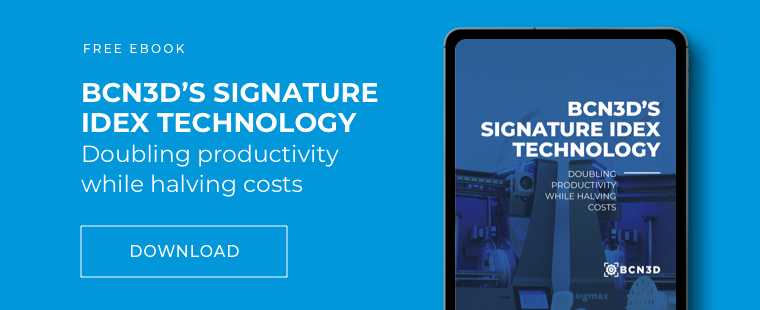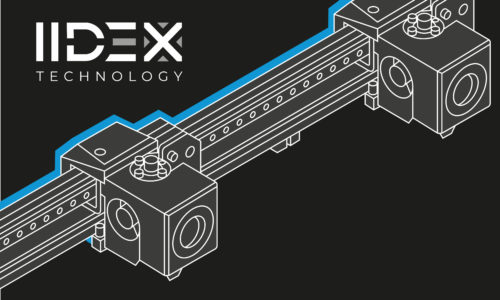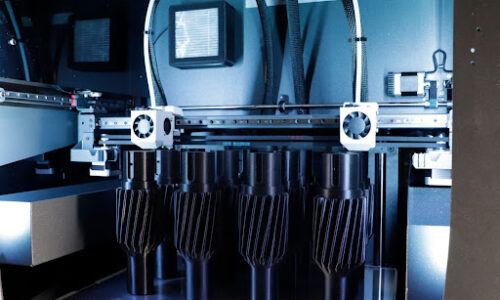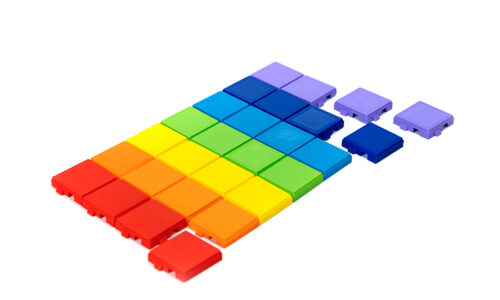Is investing in a dual extrusion 3D printer really worth it?
Any manufacturer, big or small, can benefit from owning a dual extrusion 3D printer. By using two extruders, you can use different materials and different colors and double your productivity. As pioneers in this technology, we hope that through this article you gain an understanding of how this technology works and what it could do for you.
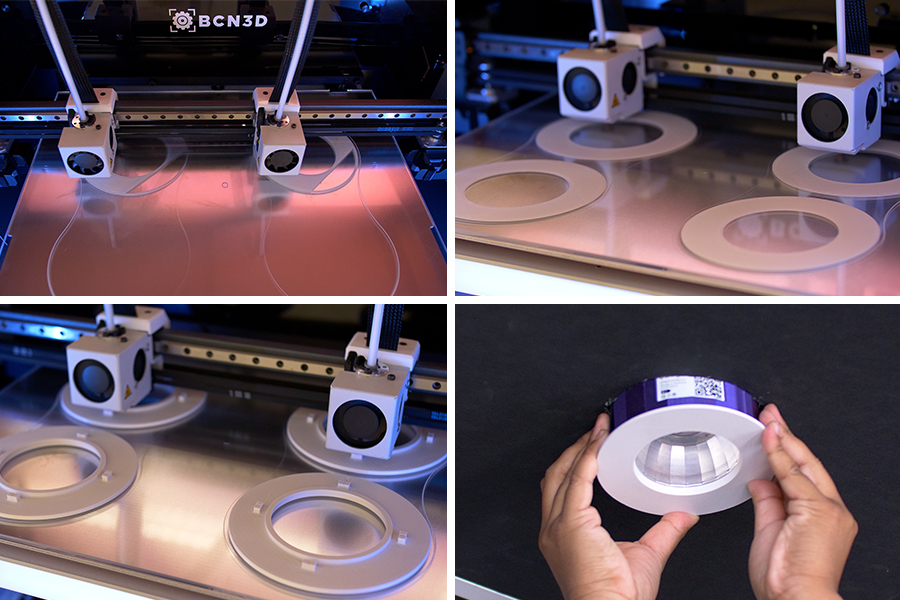
The benefits of a dual extrusion 3D printer are simple – two extruders are better than one! By implementing this kind of 3D printer into your workspace, you can double your productivity and mix and match materials in one print. Here at BCN3D, we swear by this technology, using it ourselves in the print farm at our facilities.
In a standard 3D printer, there’s an extruder board in control of a single tool head. It was in 2014 that we realized that a dual extruder over the same tool head still caused some inconveniences. We knew there was room for improvement and so this was the starting point in our creation of IDEX technology.
The road to a dual extrusion 3D printer with IDEX
The first trial in our journey to developing independent dual extrusion turned out to significantly ease the process of calibrating the extruders, prevent filament dripping from the idle extruder on the piece being printed and provide more flexibility when printing different materials. Our first completely independent dual extrusion solution was introduced in 2015 with the BCN3D Sigma.
Then, in 2018, the launch of the BCN3D Sigma brought Duplication and Mirror 3D printing modes; unique features of 3D printers, and key in the high productivity provided by the BCN3D printing solutions. Independent Dual Extrusion technology (IDEX) enables 3D printers to work with both tool heads simultaneously and independently, resulting in countless benefits.
Technically speaking, conventional dual extruder 3D printers usually have a series of mechanical axes:
- X, Y, and Z position the tool head and the piece that is being printed spatially
- E is responsible for the progress of the filament in the extruder
IDEX technology, however, allows for these axes to be doubled. Therefore, a 3D printer equipped with this technology has X0, X1, Z, E0, and E1 axes as well. This essentially means that the printer keeps sharing the Y and Z axes, while both extruders have their own X and E axes, making it possible to print with two tool heads independently.
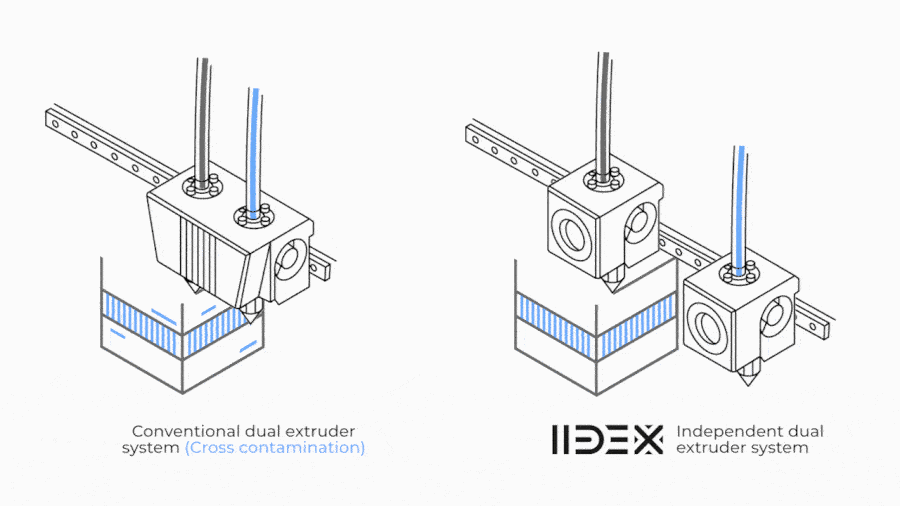
The benefits of a dual extrusion 3D printer
IDEX allows users to print more complex pieces by using hydrosoluble supports and to combine materials to obtain different mechanical properties in one single print. Two different colors can be used, and different nozzle sizes can be combined for more resistant parts and to save time. Furthermore, since the two extruders are controlled independently, you never run the risk of cross-contamination.
This system reduces the cost of machinery in half, as, with the same number of 3D printers, you can get twice as many printed parts as you would in comparison to other dual extrusion machines.
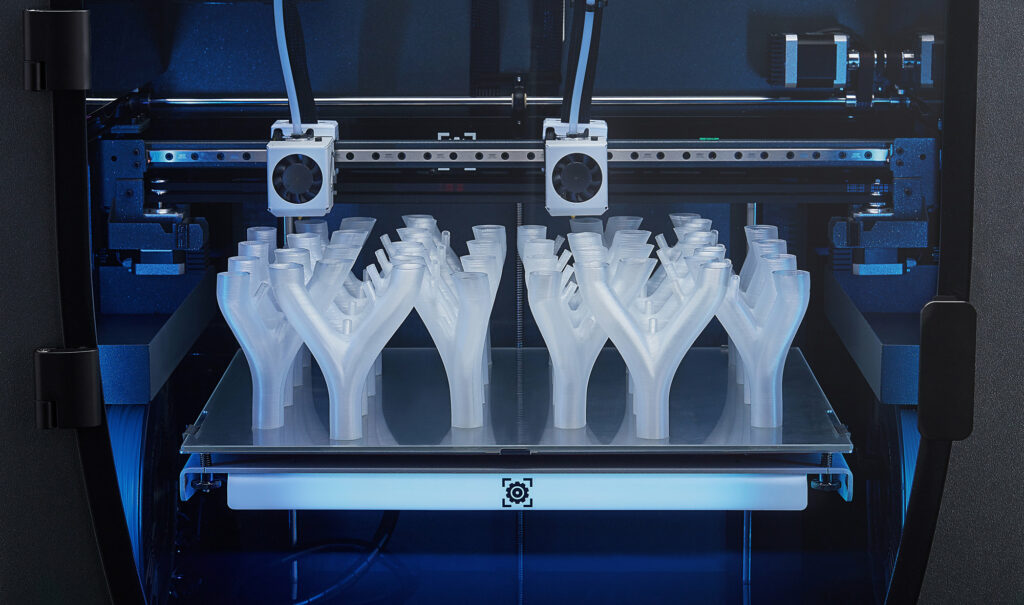
In conclusion, what’s not to love about a dual extrusion 3D printer? The power of two extruders provides more complex pieces, reduced costs, and optimized productivity. To learn more about this ground-breaking technology and see several practical examples of how our customers use it, be sure to read our in-depth white paper.

